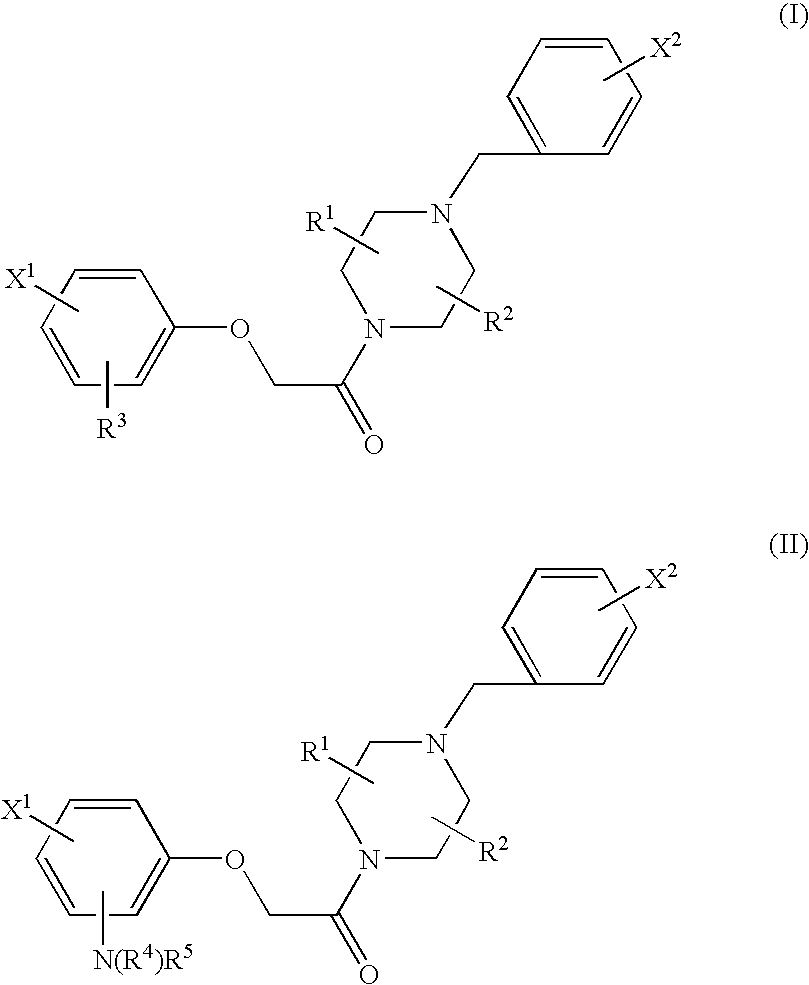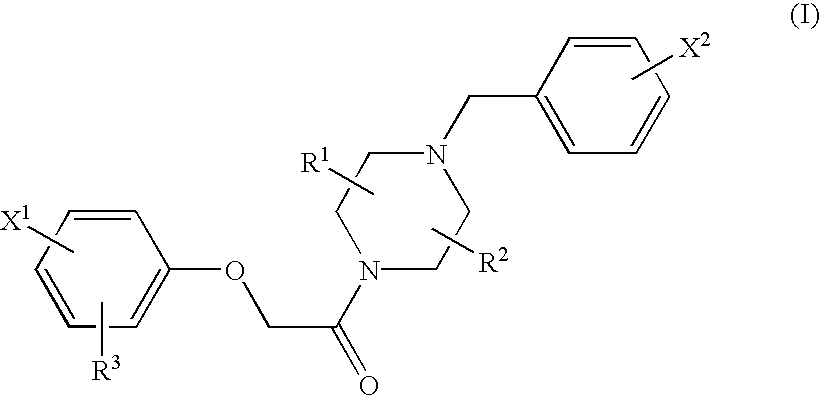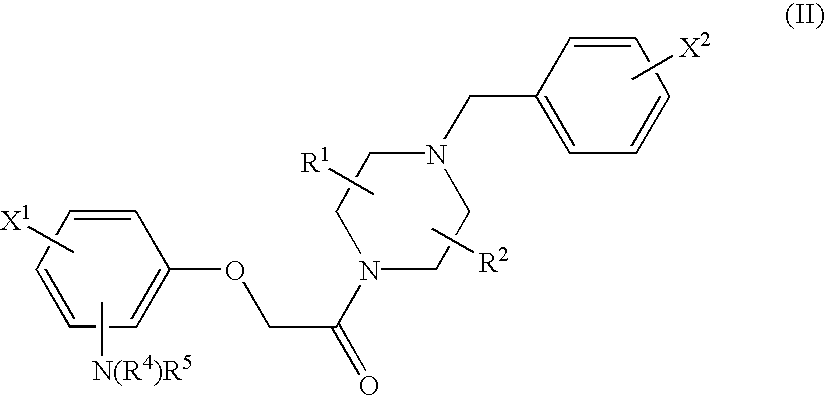Radiopharmaceuticals for diagnosing Alzheimer's disease
a radiopharmaceutical and alzheimer's disease technology, applied in the direction of drug compositions, isotope introduction of heterocyclic compounds, etc., can solve the problems of inability to deliver these antibodies inability to achieve the effect of delivering complexes across the blood-brain barrier, and inability to achieve the effect of reducing the risk of strok
- Summary
- Abstract
- Description
- Claims
- Application Information
AI Technical Summary
Problems solved by technology
Method used
Image
Examples
example 1
Preparation of 1-(5-Chloro-2-{2-[(2R)-2-methylpiperazin-1-yl]-2-oxoethoxy}phenyl)urea
##STR11##
A. DIEA (19.10 mL, 110 mmol) was added to a solution of (R)-(-)-2-methylpiperazine (10 g, 100 mmol) in 250 mL of methylene chloride. The solution was cooled to -10.degree. C. The BOC anhydride was dissolved in 250 mL of methylene chloride and this solution was added to the chilled piperazine solution over 1 hour. The reaction was allowed to warm to ambient temperature over 16 hours. The reaction mixture was filtered to remove the solids and the filtrate washed with 500 mL of water, dried over magnesium sulfate, filtered and evaporated to an oil. The oil was purified by flash column chromatography to afford 11.0 g of the compound of formula (a).
B. The compound of formula (a) (11.0 g, 55 mmol) and DIEA (10.5 mL, 60.4 mmol) were dissolved in 100 mL of methylene chloride. The resulting solution was chilled to -10.degree. C. Chloroacetyl chloride (4.37 mL, 55 mmol) was added dropwise to the solu...
example 2
Preparation of the Compound of Formula (e)
##STR12##
To a solution of 2-amino-4-chlorophenol (10 g, 69.7 mmol) in 100 mL of anhydrous THF at ambient temperature was added trimethylsilyl isocyanate (18.8 mL, 139.4 mmol) in one portion. The solution was heated to 60.degree. C. and remained at this temperature for 22 hours at which time water (1.3 mL, 76.7 mmol) was added. After 30 minutes the solution was cooled to ambient temperature and concentrated to a brown oil. This oil was dissolved in ethyl acetate, treated with activated carbon, dried over magnesium sulfate and filtered. The filtrate was concentrated to a pink solid which was crystallized from 10:1, toluene / methanol to give 5.4 g of the compound of formula (e) as tan powder.
example 3
Preparation of 1-(5-Chloro-2-{2-[(2R)-4-(4-fluoro-.sup.18 F-benzyl)-2-methylpiperazin-1-yl]-2-oxoethoxy}phenyl)urea
A. Hydrogen fluoride-.sup.18 F was prepared in a cyclotron by bombardment of H.sub.2 O-.sup.18 O with protons. The resulting hydrogen fluoride-.sup.18 F was adsorbed on an anion-exchange cartridge. The hydrogen fluoride-.sup.18 F was eluted with a solution of Kryptofix 222 (15 mg, 40 mol) and K.sub.2 CO.sub.3 (2.77 mg, 20 mol) in aqueous acetonitrile (1.5 mL, 66%). The radioactive fractions were evaporated to dryness in a nitrogen gas stream. This procedure was repeated three times with dry acetonitrile (1 mL). After addition of a solution of 4-trimethylammonium-benzaldehyde-triflate (2 mg, 6.4 .mu.mol) in dry DMF (250 .mu.l) the resulting reaction mixture was heated for 5 minutes to 100.degree. C. After cooling to ambient temperature a solution of 1-(5-chloro-2-{2-[(2R)-2-methylpiperazin-1-yl]-2-oxoethoxy}phenyl)urea, a compound of formula (d), (3 mg, 8.3 .mu.mol) in 5...
PUM
| Property | Measurement | Unit |
|---|---|---|
| temperature | aaaaa | aaaaa |
| temperature | aaaaa | aaaaa |
| temperature | aaaaa | aaaaa |
Abstract
Description
Claims
Application Information
 Login to View More
Login to View More - R&D
- Intellectual Property
- Life Sciences
- Materials
- Tech Scout
- Unparalleled Data Quality
- Higher Quality Content
- 60% Fewer Hallucinations
Browse by: Latest US Patents, China's latest patents, Technical Efficacy Thesaurus, Application Domain, Technology Topic, Popular Technical Reports.
© 2025 PatSnap. All rights reserved.Legal|Privacy policy|Modern Slavery Act Transparency Statement|Sitemap|About US| Contact US: help@patsnap.com



